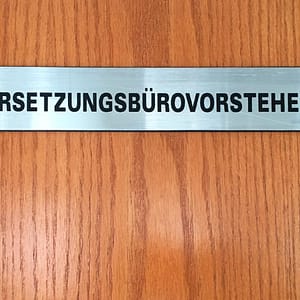Get It Right the First Time: An Introduction to Terminology Management
By taking a proactive approach to terminology management, you help your translation provider produce text that adheres to your brand, style, and voice.
What is Terminology Management?
A glossary, also called a terminology database, term base or lexicon, is a collaborative resource for your translation team. It is a database that compiles your company’s key terminology in your source language and the approved translations for that terminology in your target language(s) to help translators ensure that defined key terms are used correctly each time they appear.
A glossary should include:
- Your company name, product name, and specific services, processes, or other terms unique to your business that must be translated consistently. Include brand-specific terminology, slogans or taglines, and standard abbreviations.
- Industry-specific terms, which are especially important to clarify in cases when words have synonyms or slang terms associated.
- As an example, mobile phone is synonymous with cell phone, and online courses are synonymous with web-based courses. A glossary lets you select up front the terms you prefer to use throughout your materials.
- A glossary should also establish words that are not to be translated. Often, companies will elect to keep their company names and/or product names in English.
- If you are conducting SEO in the regions for which you are translating, be sure to include the keywords in your glossary. This ensures that your specific keywords will be used properly throughout your web content, increasing their effectiveness.
A glossary can include more than just terms. Some of the more robust glossaries include definitions, context, the date the term was added, or even the name of the reviewer. Fields can be customized depending on what information is valuable to you. At a minimum, we advise that your glossary includes the term, its translation, and the context. The context is especially important if you do not include definitions, as it helps your translator understand how to use the term appropriately throughout your materials.
Why Develop a Term Base?
Establishing your preferred terms and their pre-approved translations upfront saves time and ensures your materials maintain a consistent style, vocabulary, and voice.
- Language is subjective. Your glossary helps make sure your translator is not missing the mark in terms of your company’s style.
- A glossary ensures consistency across all of your materials – web, print, and multimedia will all maintain the same “voice.” For larger organizations, glossaries help ensure that the correct language is used across departments and business units.
- A glossary speeds up time to market by reducing the need to rework your language after it’s been translated. By making decisions about the appropriate use of words and phrases up front, you will have fewer corrections to make in the client review phase.
- Every time a translator has to ask a question about a term or its context, it slows down the process. By providing greater clarity and eliminating ambiguity, you help your translation team turn around your projects faster.
How Does It Work?
The first step in creating a glossary is defining your important terms. Any existing materials or style guides can be used for “term-mining.” While this was once done manually, LSPs now use automated term extraction tools to expedite the process. Our tools identify the nouns, verbs, or phrases that are repeated consistently throughout your text. A linguist then reviews the extracted terms and produces a clean, final list of the terms they recommend for your glossary. As the next step, we ask you to validate them. The approved language should be clear, appropriate for the target audience, and unlikely to have dual meanings or interpretations that could lead to misinterpretation. Once you have approved the English terms, they are translated. After translation is complete, your in-house reviewer may review the terms and their corresponding translations.
While it is ideal if this process is completed upfront, we can also create a glossary after your project has been completed. That way, it can be utilized in your work going forward.
Your Glossary in Action
Glossaries are not static. They should be updated on a regular basis. For maximum effectiveness, your glossary should grow and develop as your business evolves, and as you modify your product and service offerings, embrace new technologies, or update your marketing approach. If translators make suggestions or raise questions about terminology, add this information to your glossary.
As you translate materials going forward, your glossary becomes a robust collaborative resource used by all members of the translation team. The technology platforms your translators use to perform their work will prompt them to incorporate the terms and phrases in your glossary. After translation and editing are complete, a member of the team performs a quality check, during which they run a report to verify that all the terms in your glossary have been applied.
Many companies elect to perform a Client Review, which entails having an in-house reviewer check the translated, edited materials as a final quality control measure. At Eriksen, we give our clients free access to the memoQ WebTrans platform, which is fully integrated with the translation environment used by our translators and editors. Our browser-based client review portal allows your reviewers to work online with full access to your glossary, as well as translation memories and any other resources.
 Named to the 2023 Inc. 5000 list of fastest-growing companies and ranked among the world’s top 100 language service providers by CSA Research
Named to the 2023 Inc. 5000 list of fastest-growing companies and ranked among the world’s top 100 language service providers by CSA Research

